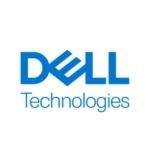What is our primary use case?
We use the solution as a virtual file server and Active Directory domain controller for the corporate office and virtual development and technical support environments for our developers and technical support staff for the timesheet software we develop in-house at our corporate office.
We have an office space of about 30 employees, a mix of corporate and company employees. We currently have two HCAs in a rack cabinet in our server room, and, with the HCAs, there are no network switches required to support the SAN.
How has it helped my organization?
The solution has provided our company with a fully redundant virtual environment at half the cost of a traditional SAN implementation. Previously, we had the traditional SAN environment of 2-3 virtual hosts, 2 SAN switches for iSCSI, and then one storage array/server (all Dell hardware). The problem was the single point of failure (SPoF) at the bottom, which was the one storage server. Due to the cost, we could only afford one storage server, however, this meant we had a completely fully redundant SAN solution at half the cost and rack space footprint.
What is most valuable?
The redundancy, lower rack space footprint (no switches are needed for the SAN), and ease of management are the most valuable aspects of the product. At the same time, the technical support staff has been one of the most knowledgeable that I have ever seen. I purchased the support package where StarWind Support will support every aspect of the HCA - the virtual hosts/hardware, StarWind Software, and VMware vSphere/ESXi server software. The ease of installation was a plus and it was very easy to understand the concepts of the HCAs and the StarWind software.
What needs improvement?
For our use case, I seriously can't think of anything missing. For us, it's a set it and forget it kind of use. For us it improves our redundancy issues and the maintenance of the HyperConverged Appliances is next to nothing.
The only issue we have had was the issue of performance, however, that is only due to the fact that we purchased a mix of SSD and regular spindle drives and restoring databases was slow as it was trying to restore the database using the spindle drives. Next time around, we will purchase all SSD drives which will resolve the issue.
For how long have I used the solution?
I've been using the solution for two and a half years.
What do I think about the stability of the solution?
In the 2.5 years we have had our HCAs, I have had not one issue with stability and it primarily just works right out of the box.
What do I think about the scalability of the solution?
You can scale the HCAs by adding more CPUs, memory, network ports, and when needed, adding another node.
How are customer service and support?
Customer service/support is outstanding. All the guys that I have spoken with were highly professional, friendly, helpful, and knowledgeable. With the Support level I signed up for, I only have to contact StarWind support for any issues I have with the virtual host hardware, the StarWind software, or the VMware hypervisor.
How would you rate customer service and support?
Which solution did I use previously and why did I switch?
We used the Dell Compellent and EqualLogics which are highly expensive, so much so that we could only afford just one storage server in each environment which made them single points of failure, with no redundancy of the storage systems.
How was the initial setup?
The initial setup was easy and straightforward right out of the box with little help needed from StarWind Support. We were able to get it all up and running in two to five hours.
What about the implementation team?
The implementation was handled in-house with just me, one person, with a little guidance from StarWind Support.
What was our ROI?
There is a cost-saving in regards to the hardware and implementation itself. The time saved in having to manage the software itself also provides an ROI.
What's my experience with pricing, setup cost, and licensing?
The setup cost is minimum (and very easy) and the price is usually half the cost of traditional SAN implementations. Licensing only pertains to the hypervisor and server OS that the StarWind SAN software will reside on.
Which other solutions did I evaluate?
We looked at Nutanix, Dell Compellent, EqualLogic, VMware ReadyNodes, and Scale Computing.
What other advice do I have?
For us, the StarWind HCAs almost works right out of the box and help me sleep at night knowing that we have a fully redundant SAN implementation.
Which deployment model are you using for this solution?
On-premises
Disclosure: My company does not have a business relationship with this vendor other than being a customer.













